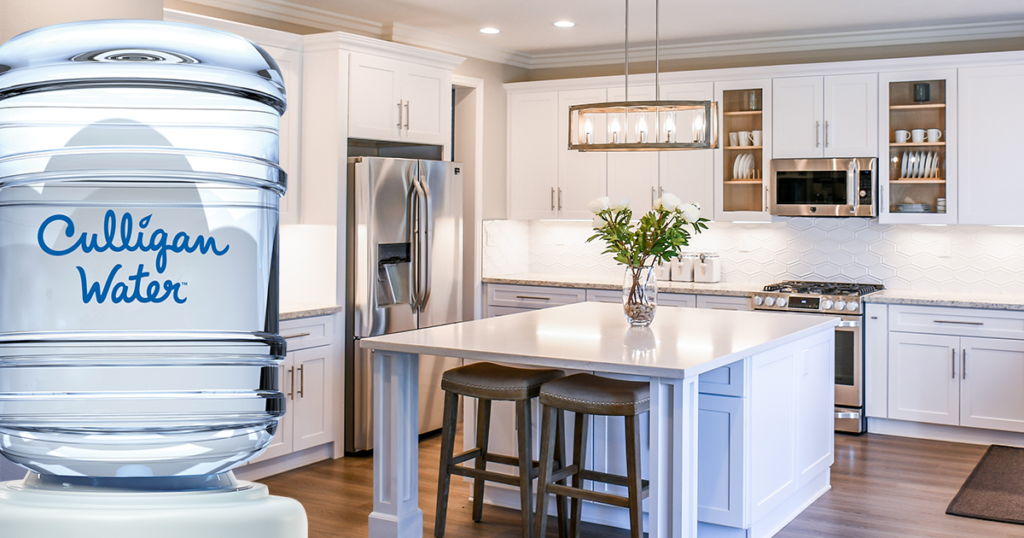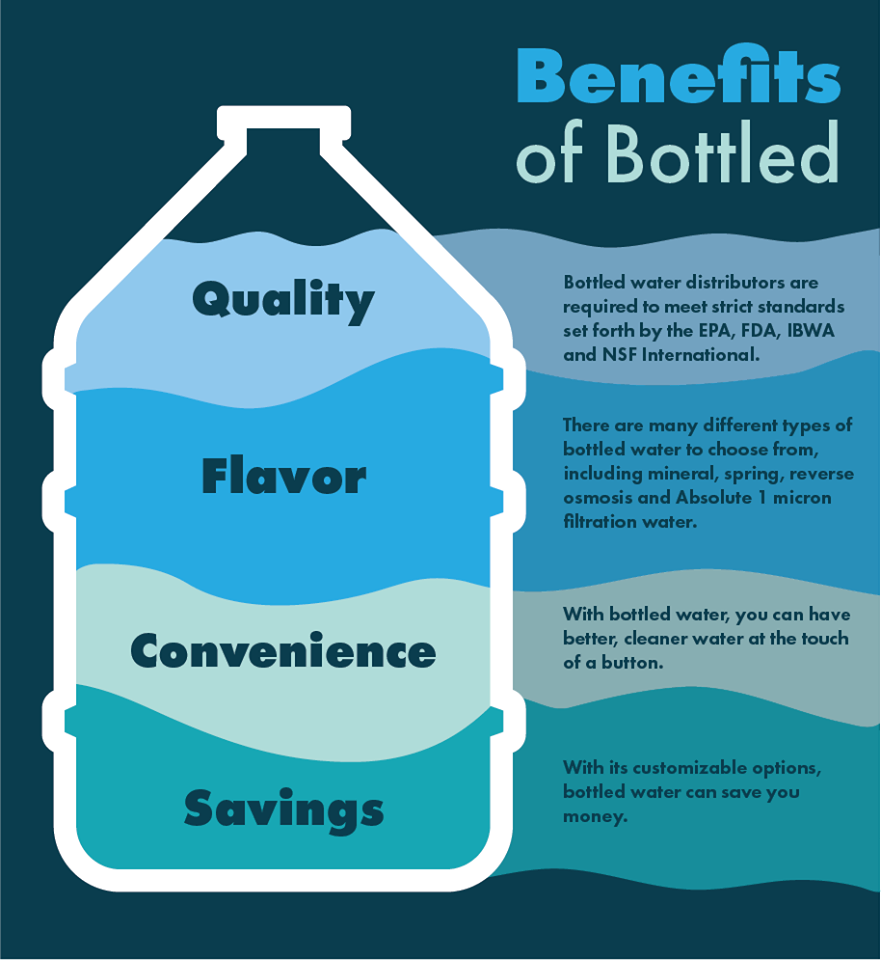What Are the Benefits of Bottled Water?
There are many benefits of bottled water. And with such a wide variety of flavors and sizes, it's a great option to keep you and your family hydrated.

What is bottled water?
As the number one selling beverage in the United States, bottled water aids in the hydration of millions. And with 13.7 billion gallons consumed by Americans each year, bottled water remains a multi-billion dollar industry.
So why are consumers choosing bottled water over an alternative option?
For starters, bottled water offers a wide variety of options. Such as different sizes, flavors and filtration methods.
In short, staying hydrated with bottled water presents many benefits to you and your family. And we'll break down the various benefits in this blog.
Let's dive in.
What are the benefits of bottled water?
Convenience
First, let's discuss the convenience of this bottled water.
Bottled water comes in different sizes. Such as single-serve water bottles or five-gallon water coolers.
Five-gallon water coolers provide you with fresh tasting water at the touch of a button. Drink the water in the comfort of your home. Or take it with you in your own reusable water bottle.
Five-gallon water coolers may work better for your home. But single-serve bottled water makes a great option for workouts, picnics or traveling.
Regardless of which option you choose, bottled water provides a safe, dependable and convenient drinking water solution for you and your family.
Flavor
Next on our list of benefits is flavor. Bottled water companies provide several different flavors for consumers.
However, not all water qualifies for bottled water. The U.S. Food and Drug Administration (FDA) considers bottled water a consumer food product. As a result, bottled water suppliers must follow strict standards.
The FDA classifies the various types of bottled water in different ways. So let's explore these flavor options further.
Mineral water
First, there's mineral water. Mineral water comes from natural underground reservoirs and mineral springs. Which gives it a higher mineral content compared to tap water.
The Food and Drug Administration (FDA) requires mineral water contain at least 250 parts per million of total dissolved solids (TDS). But the minerals cannot be added later on in the bottling process.
Minerals typically present in mineral water include:
- Calcium
- Magnesium
- Potassium
- Sodium
- Bicarbonate
- Iron
- Zinc
In addition, mineral water undergoes some processing or filtration. This includes adding or removing carbon dioxide (CO2) gas. Because CO2 prevents oxidation and limits bacterial growth in mineral water.
Spring water
Like mineral water, spring water comes from an underground source where the water must flow to the surface naturally.
To be considered spring water, the water must be collected at the spring. Or, it must be collected through a borehole that taps the underground formation feeding the spring.
If some external force is used to collect the water through a borehole, the water must have all the physical properties before treatment. And it must have the same composition and quality as the water that flows naturally to the surface.
Artesian well water
Next there's artesian well water. Which originates from an aquifer.
An aquifer contains water and is made of layers of porous rock, sand and earth. It comes under pressure from surrounding upper layers of rock or clay.
When tapped, this pressure pushes water above the level of the aquifer. Sometimes to the surface. But other means may sometimes be used to help bring the water to the surface.
Purified Water
There are several types of bottled water originating from municipal sources or tap water. However, municipalities typically treat these water supplies long before the water is bottled.
Examples of purified water include:
Distilled Water
Distilled water comes from the process of distillation. In this process, pure H2O is boiled out of its contaminants. Pure water turns into steam. It then becomes captured and cooled before turning into distilled water. All materials left behind are unwanted contaminants.
Reverse osmosis
A technologically advanced filtration process, reverse osmosis (RO) effectively reduces contaminants. Like arsenic, sodium, chloride, fluoride, radium and other harmful microorganisms.
The process involves forcing the water through a very fine, semi-permeable membrane. Which only allows the water to pass through and catches all the impurities.
This type of filtration requires an external force to complete the transport. So pressure is a key part of the reverse osmosis process.
Because contaminant molecules are larger than water molecules, only water pushes through the semipermeable membrane. Leaving contaminants behind.
Absolute 1 micron filtration
With absolute 1 micron filtration, water flows through filters that remove particles larger than one micron. Which is incredibly small. For comparison, a single micron is 00004 inches in size.
These filtered particles include Cryptosporidium, a microscopic parasite that causes the diarrheal disease cryptosporidiosis.
Ozonation
All types of bottled water producers use an antimicrobial agent, called ozone gas, instead of chlorine to disinfect the water.
Quality
The EPA regulates our tap water. But bottled water distributors must meet standards set forth by other organizations as well. Such as the FDA, IBWA and NSF International.
History of Bottled Water Standards
In 1973, the FDA developed federal quality standards for bottled water. And these standards used the U.S. Public Health Service standards for drinking water as their guide.
Then, the 1974 Safe Drinking Water Act gave regulatory oversight of tap water to the EPA. However, the law allows states to set and enforce their own drinking water standards as long as they meet federal EPA limits.
Meanwhile, the FDA took on the responsibility to ensure quality standards of bottled water under the FD&C Act.
Specific Quality Standards
In most cases, FDA bottled water quality standards remain the same as the EPA's maximum contaminant levels (MCL) for tap water.
However, a few differences exist as a result of the substance not being found in bottled water. Or the regulated substance falls under another provision of law. Such as the FDA's food additives program.
Take lead for example. Because lead leaches from pipes as water travels from water utilities to your tap, the EPA set its limit for lead in tap water at 15 parts per billion (ppb). But the bottling water process does not make use of lead pipes. So the lead limit for bottled water sits at 5 ppb.
For bottled water production, bottlers must follow the Current Good Manufacturing Practice (CGMP) Regulations put in place and enforced by FDA.
Water must be sampled, analyzed and found to be safe and sanitary. These regulations also require proper plant and equipment design, bottling procedures and record keeping.
In addition to following CGMP regulations, the FDA oversees inspections of bottling plants. The agency inspects bottled water plants under its general food safety program.
It also requires states perform some plant inspections under contract. Plus, some states require bottled water producers to be licensed annually.
Savings
With its many customizable size options, bottled water allows you to save money.
While a whole home filtration system or a reverse osmosis system may be the better choice for some, bottled water proves to be a more cost-efficient option for others.
Bottled water presents you the opportunity to personalize different aspects of your order. Such as bottle size and delivery frequency.
As a result, your family receives only the amount of water needed. And minimizes waste.
Why Culligan Bottled Water?
At Culligan, we pride ourselves on providing people with the best water possible. So what are the benefits of Culligan Bottled Water?
Dependable Delivery
With Culligan water's industry-leading delivery, you'll never have to worry about running out of clean, great-tasting water.
We offer convenient and efficient delivery directly to your home. With the flexibility to choose your quantity and frequency, your family will have better, cleaner water whenever you need it.
Exceptional Service
Whether you choose to rent or purchase a Culligan bottled water cooler, we are dedicated to providing professional, helpful and dependable service.
In addition to convenience, we ensure peace of mind with every bottled water delivery. Your local Culligan dealership cleans and sanitizes each water bottle before and after delivery.
We also recycle three and five-gallon water bottles to keep your home and the environment cleaner.
High-Quality Water
Regardless of the delivery schedule you choose, every bottle contains great-tasting Culligan reverse osmosis water.
With Culligan bottled water, you and your family will enjoy the convenience of ever-flowing, better-tasting drinking water in the comfort of your own home.
So what are Culligan's options?
Bottled Water Coolers
Culligan bottled water coolers make a great addition to your home or office. Culligan bottled water offers a line of office water coolers and home water dispensers that are both stylish and functional.
Additional benefits include temperature settings, space-saving design, low maintenance and filtered drinking water.
Single-Serve Culligan water Bottles
Single-serve water bottles make on-the-go hydration easier. Bring them along during exercise, lunches, special events, outdoor activities, client meetings and more.

Conclusion
In conclusion, selecting bottled water as your drinking water of choice presents many benefits. Such as convenience, flavor and quality.
Our local water experts stand ready to recommend the perfect bottled water solution. And keep your family hydrated with the highest quality drinking water possible.
